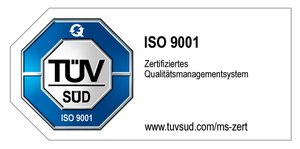Laser tracker
Laser trackers are measuring devices that can capture 3D coordinates of object points. They are basically interferometers whose laser beam can automatically follow a reflector. Therefore, they are technically also called tracking interferometers. Here, the central element is a laser interferometer that can be rotated around the spherical reference surface and whose orientation is measured at two angles using rotary encoders. In this way, points can be measured in spherical coordinates. In metrology, laser trackers find numerous applications. They are a central component of quality assurance and measurement of components, are used to digitize objects and are used to calibrate machine tools. Laser trackers are particularly suitable for measuring large objects. For example, components of large plants or aerospace structures can be measured quickly. Because the measurement uncertainty of laser trackers is mainly influenced by environmental conditions and the length that the laser radiates through space, it is worthwhile to document environmental influences and variations in temperature, air pressure and humidity during operation. In this way, systematic errors in the length measurement can be well compensated for if necessary.
We find the perfect solution for your project.
Contact us if you have questions to our services in the area of 3D metrology. We are looking forward supporting you in your success.



